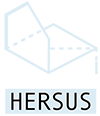Please wait while flipbook is loading. For more related info, FAQs and issues please refer to DearFlip WordPress Flipbook Plugin Help documentation.
HERSUS IO6 – The International Handbook for Sustainable Heritage Management and Design: Notions, Methods and Techniques, is the last Intellectual Output of the European project HERSUS Enhancing of Heritage Awareness and Sustainability of Built Environment in Architectural and Urban Design Higher Education, an Erasmus+ project within the EU program for education, training, youth and sport, developed by a network of five universities. This last output has been designed and developed in a form of a publication in the field and it is expected to have an overall impact on different target groups in the academic environment, including the students, educators, and researchers, but also practitioners and institutional agents.
AIMS AND PURPOSE
The aim of this output is to develop didactic materials by professionals who are involved in the project, which should be used on new courses on master level. The International handbook for students on Research and Design for the Sustainability of Heritage aims to offer an innovative scope, combining global and holistic approach to heritage. International handbook for students is in English, and it is prepared in a digital version for dissemination.
The ‘International handbook for Sustainable heritage management and design is conceptualized in the form of learning material that integrated both (1) texts written by consortium leading professionals (teaching staff) dealing with relevant topics, with (2) selected texts/papers of the world’s leading experts on observed topics. Accordingly, the Handbook is organized in two PARTS:
The first part of the handbook, PART I, integrates the five HERSUS partners contributions in three chapters from the perspective of EDUCATION, the PRACTICE and the RESEARCH
The second part, PART II, develops the guest experts’ contributions along the development of the project, offering their valuable knowledge in the context of HERSUS in this publication.


